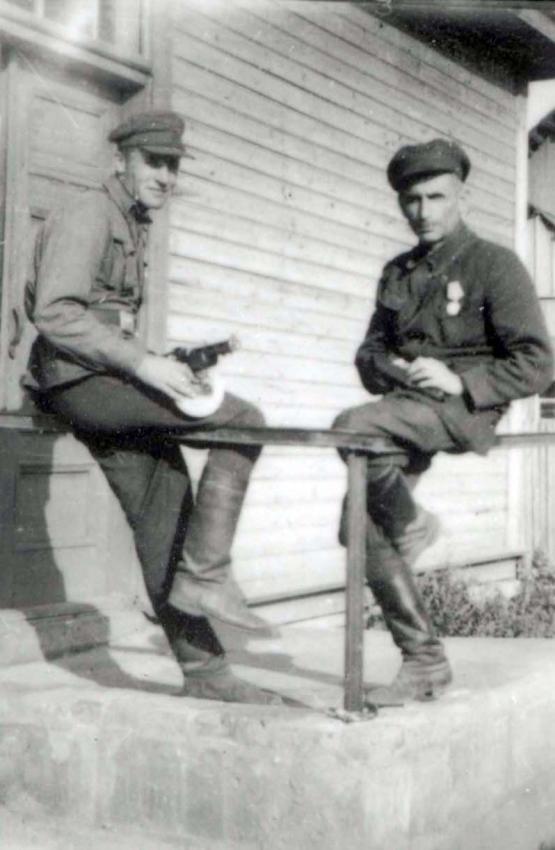In September 1939, Western Belarus was annexed to the Belarus Republic of the USSR. On 17 September, Soviet tanks entered Mir.
"The Soviet tanks arrived. It was such a great surprise that young and old, large and small streamed into the streets to welcome our saviors. None of us thought about the long term. We just enjoyed the moment… while that night, we heard on the radio: blackout in Berlin, blackout in London, but we were bathed in light and joy…"
Miriam (Marisha) Swiranowski (Leader), "In die Jahren [Years] 1939-1941", Mir, pp. 582-583
After a short while, as was taking place across Belarus, Soviet rule was established in Mir, including nationalization of the economy, the closure and liquidation of national and religious institutions, the sovietization of the education system, the dismantling of political parties and Zionist and Jewish youth movements, and more. Even the "Bund" was deemed unacceptable in the eyes of the Soviets. Members of the "Hashomer Hatzair" movement in Mir continued their Zionist activities underground. A group of young members of the pioneering youth movements left Mir and joined the , which was then under independent Lithuanian rule. In addition, the majority of members of the Mir Yeshiva, renowned for its students and rabbis, left the town for Vilna. Following a string of events, the yeshiva arrived in Shanghai, where it remained until the end of the war. The yeshiva building in Mir was confiscated by the authorities and turned into a lecture and dance hall.
On 10 October 1939, the USSR announced that it was transferring Vilna to independent Lithuania. This declaration was taken as a sign by many to move to Vilna, including leaders of Zionist parties, youth movement members and many yeshivot. Until the end of October, movement to Vilna remained unrestricted, and thousands of Jews made use of this opportunity. In mid-November 1939, the border between Lithuania and the USSR was stabilized and closed, and from then on the only method left to the refugees was illegal crossing. Some 14,000-15,000 Jewish refugees arrived in Vilna, among them more than 2,600 members of the Zionist youth movements. These movements established an umbrella organization – the Coordinizatsia of the Pioneering Youth Movements – that dealt with issues of work and the economic challenges of its members, as well as emigration to Eretz Israel (Mandatory Palestina).
